10 Best Tarragon Substitute Options: What to Use When You Don’t Have it on Hand
What do you use when you don’t have fresh tarragon on hand? Here are the best tarragon substitute options you may already have in your herb or spice drawer.
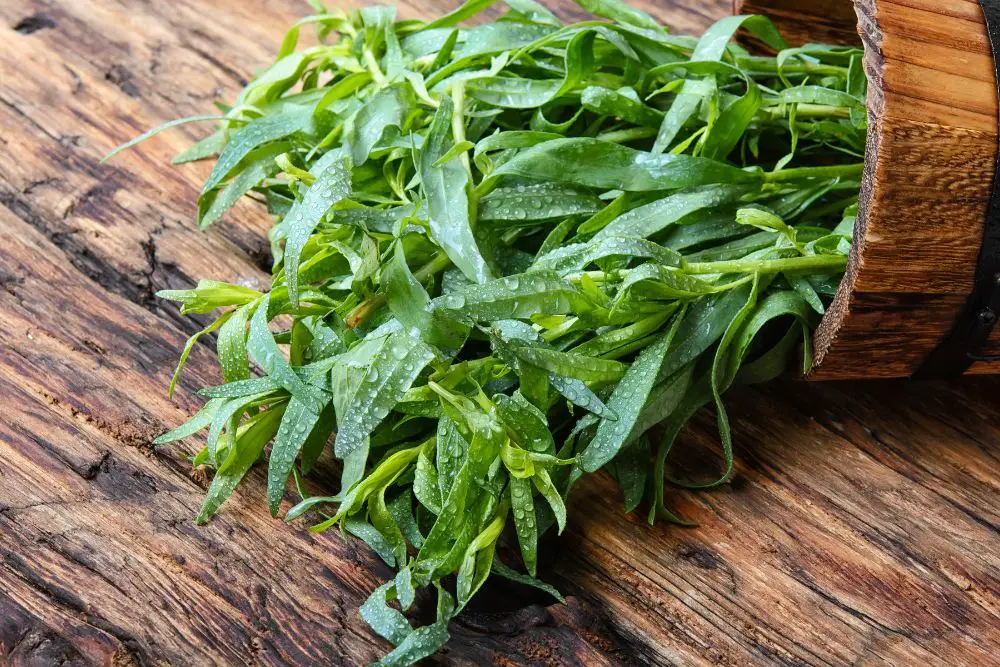
It’s a dreadful moment when you’re about to season the chicken, fish, or an omelet, and you have every single ingredient except fresh tarragon.
As a skinny, leafy green herb that’s not always easy to find (or perhaps you just don’t care for the taste), you may have wondered if you can leave tarragon out of your recipes.
Will the dish taste just as good without it? Is there anything you can use in place of fresh tarragon? Before you make a mad dash to the grocery store, here are the best tarragon substitutes you may already have in your herb or spice drawer.
Fresh Tarragon: What Is It Used For and What Does It Taste Like?
Have you ever tried a creamy French béarnaise sauce drizzled over your steak or poached eggs? If so, you’ve tasted tarragon— the signature herb of béarnaise sauce— which is adored and used liberally in French cuisine for its delicate, unique, sweet, and bitter taste.
10 Best Tarragon Substitute Options
1. Dried Tarragon
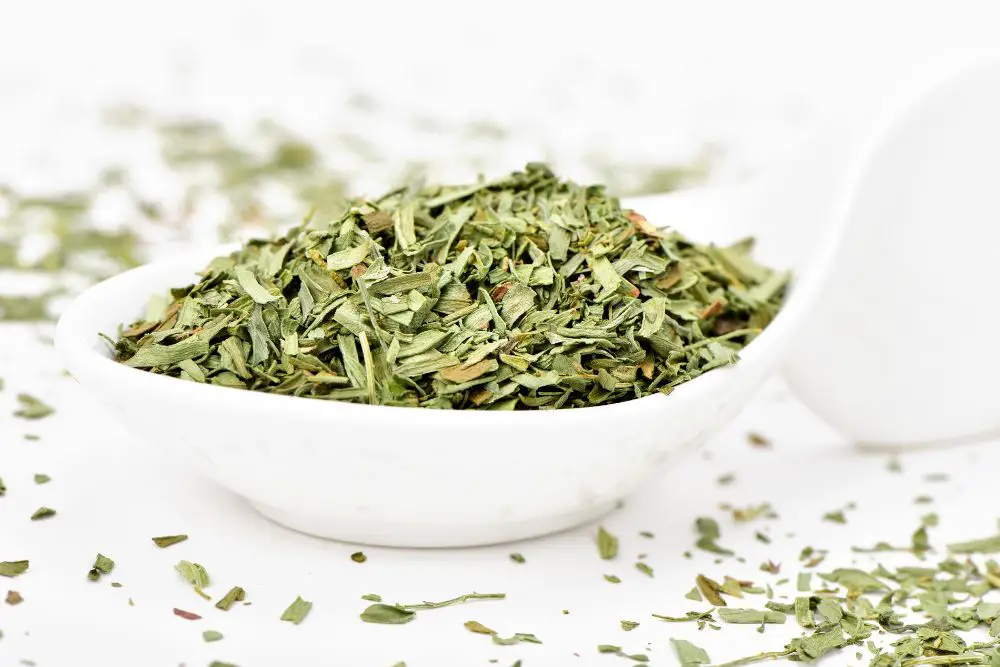
What to know: The most obvious substitute for fresh tarragon may seem like dried tarragon, especially because the dried version can be easier to find. However, fresh and dried tarragon has different tastes and can drastically alter the flavor of your recipe.
Dried tarragon has a more potent and bitter taste than fresh tarragon, so you’ll want to use the dried version sparingly. Depending on the other ingredients the recipe calls for, you may even want to consider using a different herb from the list.
How to substitute: Because dried tarragon has a stronger flavor, you don’t want to substitute equal amounts. One teaspoon of dried tarragon equals one tablespoon of fresh tarragon.
Best uses: Dried tarragon works well when blended with other herbs and aromatics, such as basil, shallots, garlic, parsley, and thyme. Some bearnaise sauce recipes use dried tarragon instead of fresh.
2. Chervil
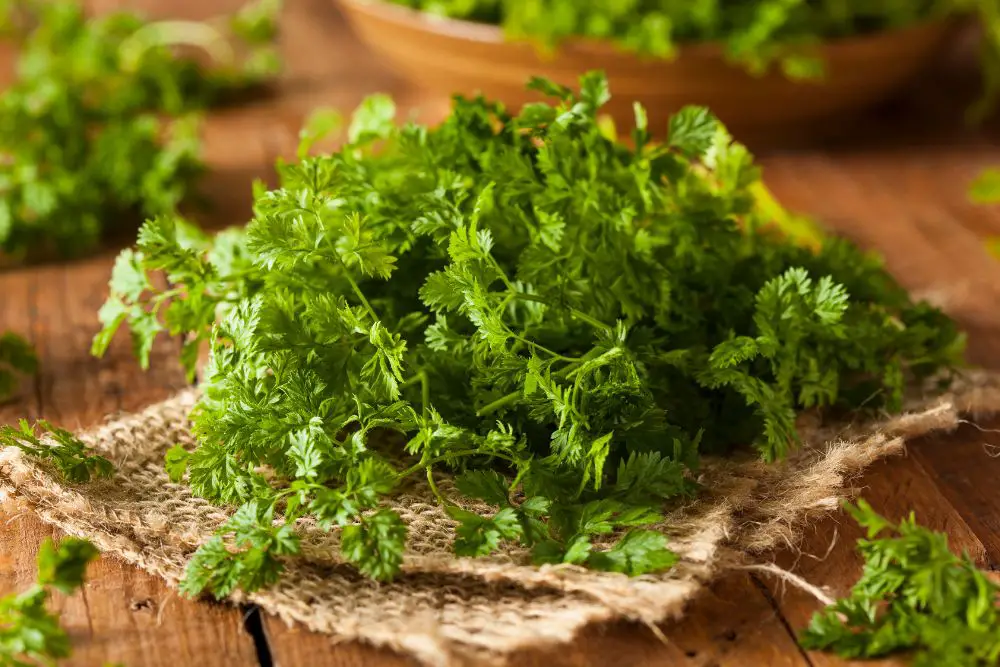
What to know: Chervil is the closest herb to fresh tarragon based on taste and aroma. It has a similar flavor of licorice and anise but is also described as a “delicate cross” between tarragon, parsley, and chives.
Since the hints of licorice and anise aren’t as strong in chervil, it can be an ideal substitute if you find fresh tarragon too intense or ease into tarragon’s stronger flavor profile.
How to substitute: one tablespoon of fresh chervil = one tablespoon of fresh tarragon.
Since chervil has a milder taste, you may need to use more than a tablespoon to get the same effect as tarragon.
Best uses: Béarnaise sauce, eggs, salads, vinaigrettes, poultry.
3. Fennel
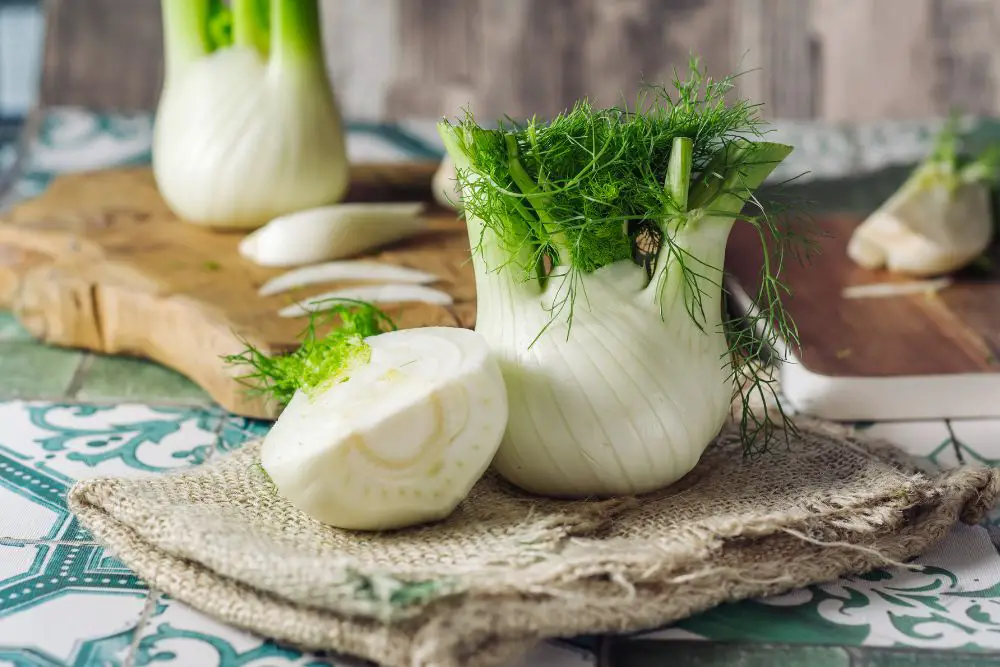
What to know: Although fennel fronds (the leaves of fresh fennel that look like dill) and fennel seeds are part of the celery family, they closely mimic the tarragon taste because they have a similar black licorice flavor.
How to substitute:
Fresh fennel for fresh tarragon: one tablespoon of fresh tarragon = one tablespoon of fresh fennel fronds
Fennel seeds for fresh tarragon: one tablespoon of fresh tarragon = 1/16 to ⅛ teaspoon of fennel seeds (a pinch)
Fennel seeds for dried tarragon: one teaspoon of dried tarragon = ⅛ teaspoon of fennel seeds
Best uses: lighter vegetable-based dishes, such as soups, vinaigrettes, and citrus salads.
4. Basil

What to know: Basil tastes similar to tarragon but is far milder, with no hint of a licorice taste. You can use fresh basil leaves instead of tarragon, but you will need a greater amount to achieve the right amount of flavor.
How to substitute:
Fresh tarragon for fresh basil: one tablespoon of fresh tarragon = two tablespoons of fresh basil
Best uses: pasta and cream sauces (excluding béarnaise), soups, salads, vinaigrettes, poultry, and fish.
5. Aniseed (Anise)
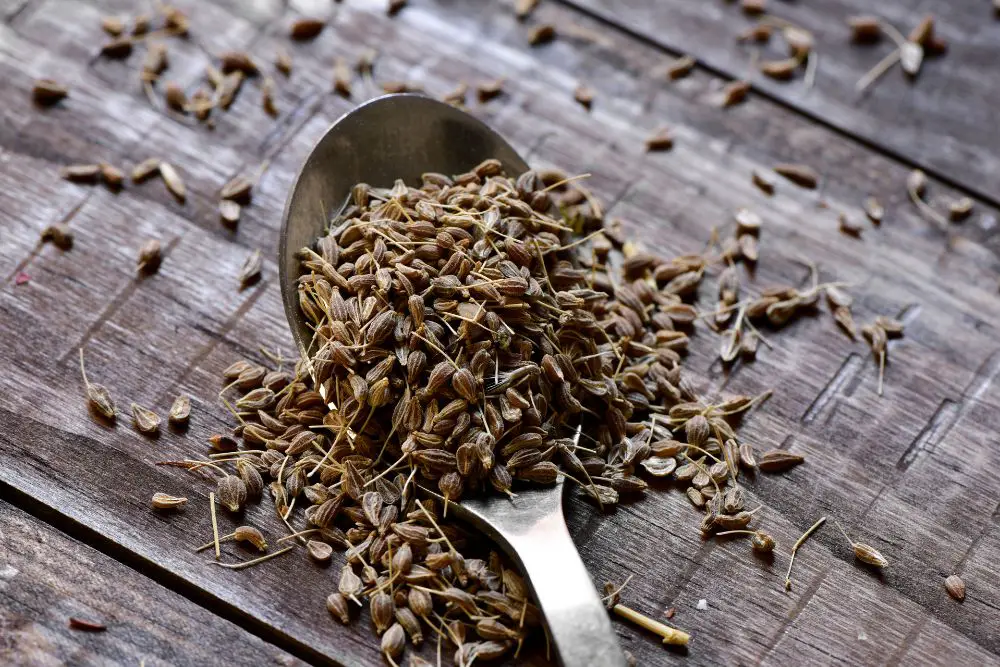
What to know: Tarragon and anise seed contain the same organic compound that gives off a licorice taste. Anise is a strong, pungent taste and a cross between fennel and tarragon. If you’re making a recipe that requires a deeper flavor profile, anise can be the perfect substitute, as it’s more pungent and has a slightly sweet flavor with spicy, peppery notes. Anise is used in both savory recipes and sweet dishes.
How to substitute:
Anise seed for fresh tarragon: one tablespoon of fresh tarragon = a pinch (1/16 – ⅛ tsp) of anise seed
Anise seed for dried tarragon: one teaspoon of dried tarragon = a pinch (1/16 – ⅛ tsp) of anise seed
Best uses: soups, stews, and broths.
6. Marjoram
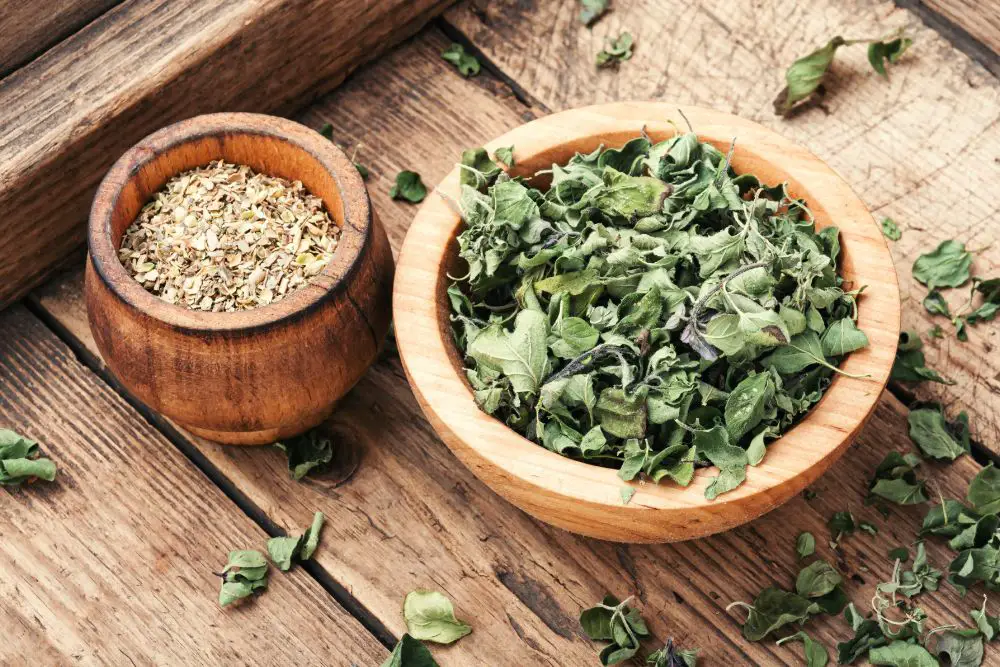
What to know: Marjoram has an earthy, warm, woodsy flavor with hints of citrus. It does not have a licorice taste and is part of the oregano family. It is often compared to a milder version of oregano and used in place of it in recipes. If you don’t have marjoram but have oregano on hand, scroll down to see how to substitute oregano for dried tarragon.
How to substitute:
Marjoram for dried tarragon: one teaspoon of dried tarragon = one teaspoon of marjoram
Best uses: salad dressings, poultry dishes, vegetable dishes.
Being closely related to oregano, marjoram also works well in tomato-based sauces and other meat dishes, should you come across a dark meat or tomato pasta recipe that lists tarragon in the ingredients.
7. Fresh Parsley and Cinnamon Combined
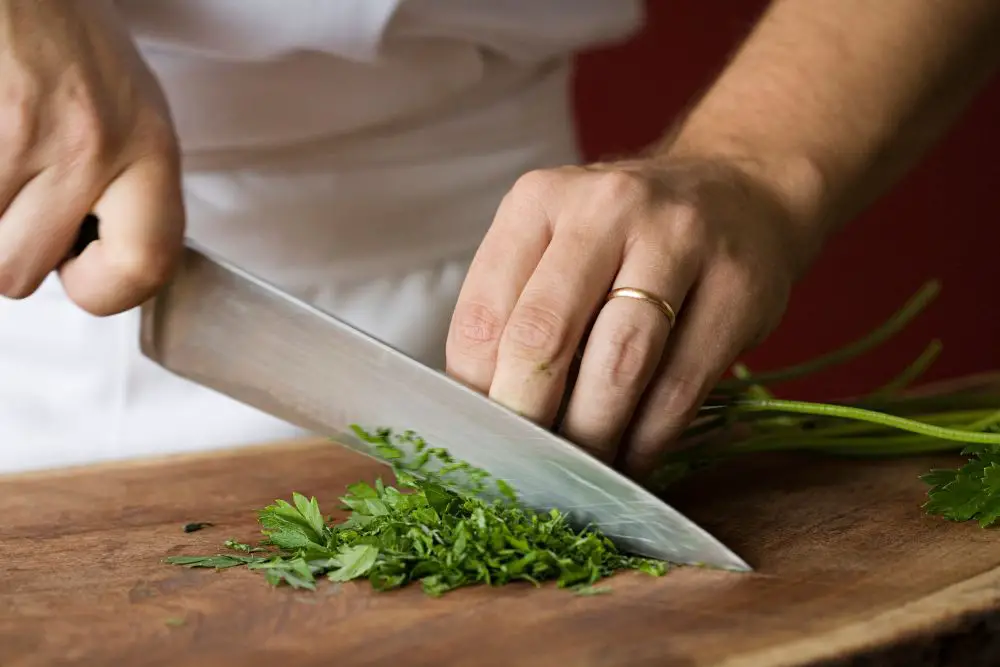
What to know: One of the most common uses for tarragon is to make a French béarnaise sauce, which pairs with poached eggs, steak, or seafood. If you’re making béarnaise sauce and don’t have fresh or dried tarragon, some recipes suggest using a combination of fresh parsley and cinnamon to mimic tarragon’s slightly sweet and bitter taste.
How to substitute:
All you need to do is simmer in a saucepan:
½ teaspoon cinnamon
1 tablespoon parsley
¼ cup of water
Allow herbs to simmer for a few minutes without boiling. Remove from heat and use as a replacement in a béarnaise sauce recipe.
8. Dill
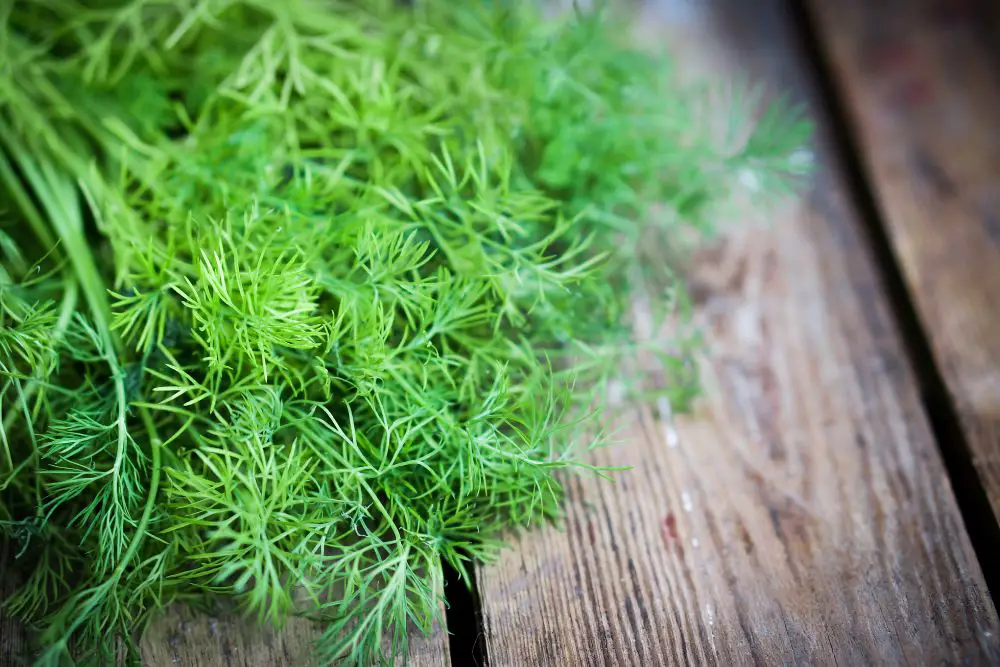
What to know: Just like basil and marjoram, dill has no licorice taste, so it can be an excellent substitute for tarragon in seafood dishes where hints of licorice may not be desired. Dill is bitter and a little bit sweet, with hints of citrus and celery notes.
How to substitute:
Fresh dill for fresh tarragon: one tablespoon of fresh tarragon = one tablespoon of fresh dill
Fresh dill for dried tarragon: one teaspoon of dried tarragon = one tablespoon of fresh dill
What dishes it works best with: seafood dishes, vinaigrettes, salad dressings, cream sauces (except béarnaise).
9. Angelica
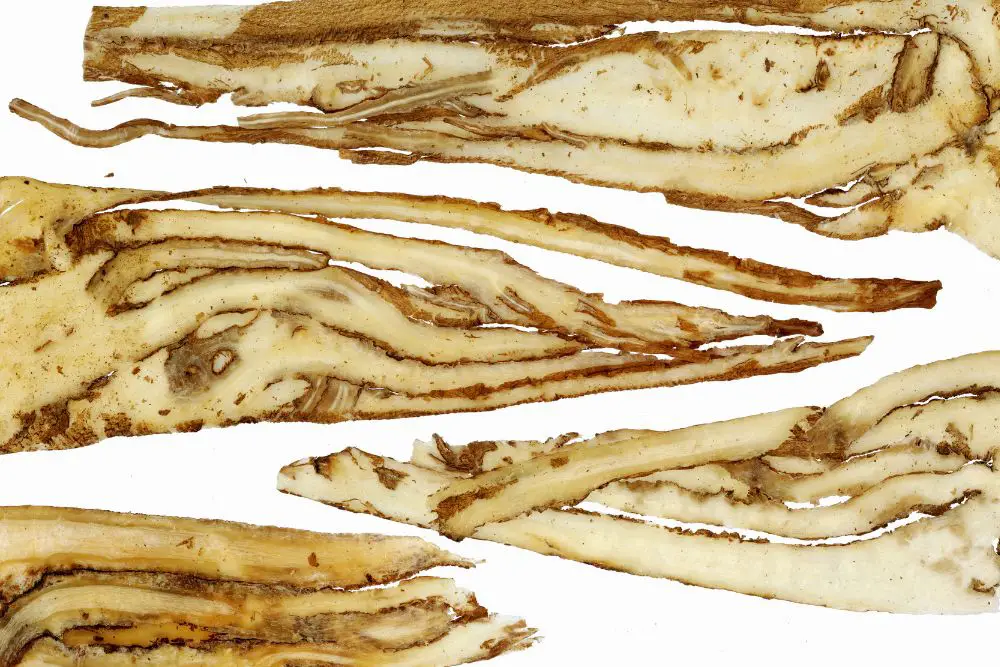
What to know: Angelica is related to dill and fennel and has a bitter, earthy flavor with a sweeter aroma and a hint of celery and licorice. The roots and seeds of angelica (not the leaves) are used in cooking. Angelica is not the most accessible herb, but if you happen to have some on hand, you can use it in place of dried tarragon in recipes where you want to mimic the tarragon’s deeper flavors.
How to substitute:
Angelica for dried tarragon: one teaspoon of dried tarragon = one teaspoon of angelica
What dishes it works best with: fish, poultry, stews, soups.
10. Oregano
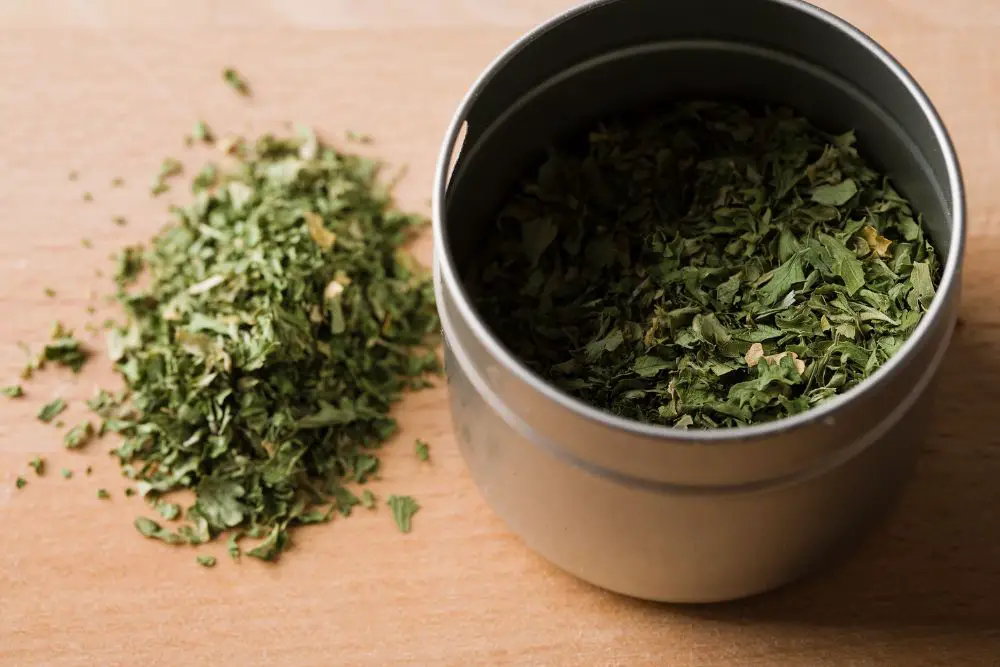
What to know: Related to marjoram, oregano has a bitter, peppery, sharp taste.
How to substitute:
Dried oregano for dried tarragon: one teaspoon of dried tarragon = one teaspoon of dried oregano.
What dishes it works best with: salad dressings, poultry dishes, vegetable dishes.
Oregano is most commonly used in tomato-based sauces. If ever you come across a tomato-based pizza or pasta recipe that lists dried tarragon in the ingredients, oregano is an ideal swap.
How to Freeze Fresh Herbs Like Tarragon to Use Later
If you know you’ll be using tarragon in the future, you can always pick up some fresh tarragon ahead of time and freeze it for later use. All you need is a heavy freezer bag or ice cube tray and follow these three quick and easy steps.
- Wash, trim, and chop the ends off of the tarragon.
- Allow tarragon to dry completely.
- Place tarragon in the freezer bag and store it in the freezer, or freeze it in an ice cube tray with a small amount of water and transfer it to a freezer bag.
When wrapped in a damp paper towel and stored in a plastic bag in your refrigerator, fresh tarragon can last 10-14 days. Other fresh herbs, like mint, can be stored the same way.
The Takeaway
Tarragon is a unique herb that’s bitter but slightly sweet, with notes of licorice, anise, pepper, and mint. It is used abundantly in French dishes, delicate vegetable, seafood, and poultry recipes, and rich, creamy sauces.
The best substitutes for fresh or dried tarragon will ultimately depend on what flavor you’re trying to achieve in your recipe.
In our opinion, chervil is the best tarragon substitute for taste and aroma. Anise and fennel are the best substitutes if you want to maintain a deeper, licorice-like flavor in your dish. If you’re looking for a milder tarragon substitute without a licorice flavor, fresh basil, marjoram, oregano, or dill are your best bets.

About the Author
Sharon Chen is an Integrative Nutrition Health Coach and author of the Complete Sous Vide Cookbook. She believes food not only brings healing but also connection. As the creator of StreetSmart Kitchen, she aims to make meal prep easier than ever and help you find balance, ease, joy, and simplicity in the kitchen as you improve your well-being.


